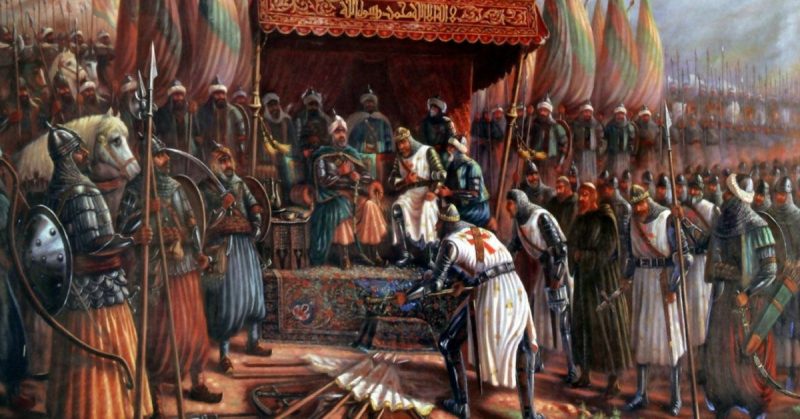For Muslims living in the Holy Land, the arrival of Christian crusaders from the late 11th century onwards was hugely disruptive. It brought misery to many and death for some. So how did Muslims respond to the extraordinary appearance of these foreign armies bent on their destruction?
Expectations of Apocalypse
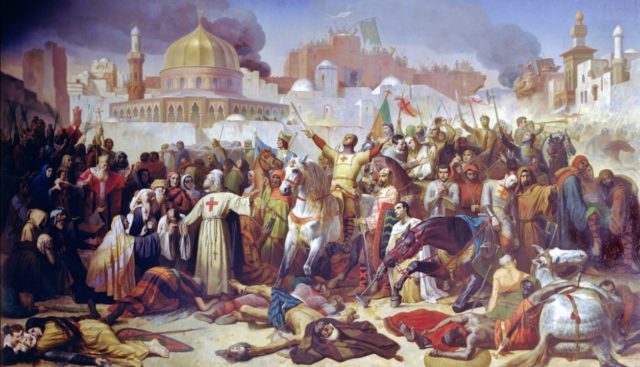
As in Christian Europe, visions of a coming religious apocalypse were prominent in the minds of medieval Muslims. Ancient texts described this apocalypse, many of them spuriously attributed to the prophet Daniel or to Ka’b ibn al-Akhbar, a companion of the Prophet Muhamad.
As the crusaders arrived, they looked like something out of these prophecies. Written when Islamic territory had been under attack by the Christians of Byzantium, some prophecies mentioned Christians. They foresaw Muslims suffering setbacks at Christian hands before eventually triumphing, a pattern that would now be carried out. For the less literal-minded, the Christians could even be seen as the embodiment of Gog and Magog, who would supposedly lead barbarous hordes out of the west in the last days.
The first reaction of many Muslims, especially the more superstitious, was to see these invasions as a sign that the last days had come, and that they should prepare for the end of the world.
Underestimating the Problem
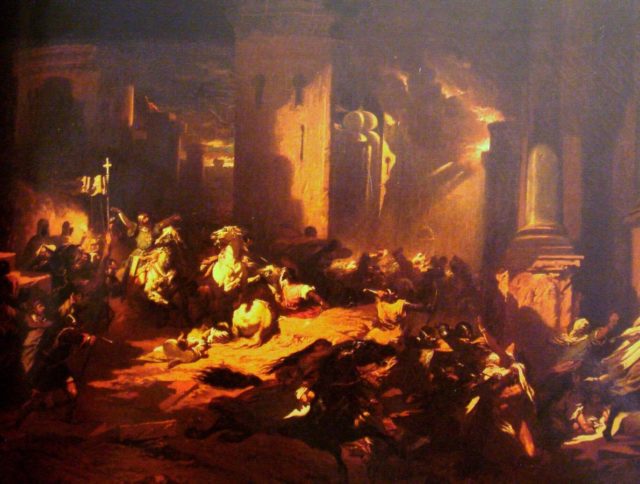
While the unexpected arrival of the First Crusade created a sense of panic in some quarters, the initial response from those in power was less than impressive.
In part, this was a matter of politics. The world of Islam was just as divided as that of Christianity, and political disputes didn’t go away just because a new enemy had arrived. Because of these political conflicts, armies sent to relieve Antioch in 1097-8 were uncoordinated, and the cities south of there too weak to resist the crusaders.
Others misunderstood the army they were facing, believing that it was a Byzantine expedition. They underestimated its strength and staying power, with the Egyptian general and Vizier al-Afdal confident that Jerusalem could quickly be retaken.
The crusade was so alien and unprecedented that it was hard for anyone to fully understand its importance.
Outrage
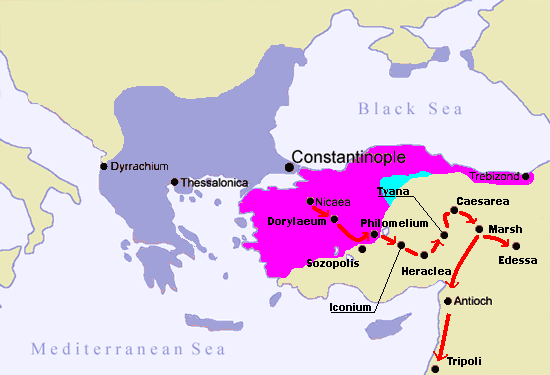
This under-appreciation of the First Crusade did not prevent strong reactions to the way it was fought and its impact on Muslims.
The behavior of the early crusaders in the Holy Land did not match what most modern Christians would call Christian behavior. Caught up in the fervor of fighting heathen foreigners, and with little political or emotional attachment to the region as it really was, the crusaders ran wild. Many innocent civilians were massacred in atrocities at places such as Ma’rrat al-Numan. Even the city of Jerusalem, the holy center of the Mediterranean world, was not spared. Accounts of its fall describe crusading knights wading up to their knees in blood as they brutalized the inhabitants.
Not unreasonably, inhabitants of the region responded with outrage to these atrocities and to the arrival of foreign invaders overrunning their homes. Delegations seeking the protection of local powers spoke passionately about the death and destruction, about their kin sleeping “in vultures’ bellies,” as the Damascan Qadi al-Harawi put it. Fury stirred in the hearts of the region’s Muslims.
Jihad in Principle
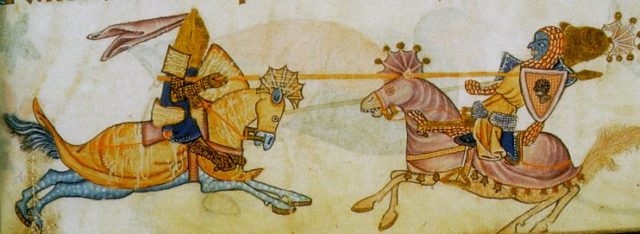
As it became apparent that a strong military response was needed, the war for the Holy Land became associated with the idea of jihad or struggle. This concept covered the struggle for Islam, up to and including making war in the name of the religion. As the Qu’ran said, “fight the unbelievers totally even as they fight you totally; and know that God is with the God-fearing”.
Scholars such as Ali ibn Tahir al-Sulami saw the crusades as a Christian equivalent of jihad, a total fight against Islam which called for their own jihad in response. This triggered a wave of writings exploring jihad in this new context, with books such as the 12th century Bahr al-Fava’id refining ideas of what jihad stood for and how a Muslim should behave.
Jihad in Practice
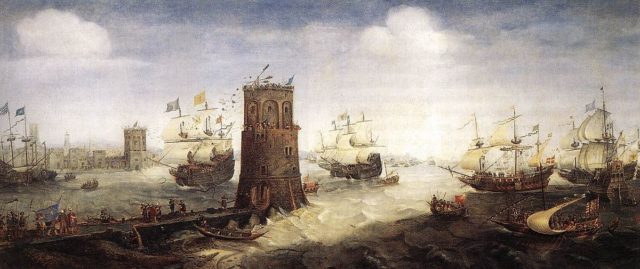
It was not easy to unite Islamic forces. Like the crusaders themselves, locals had on-going political disputes with co-religionists that prevented cooperation and sometimes turned to violence.
The first figure to emerge as a potential leader of a united jihad was Ilghazi, who took on this role in 1118. He won a victory at the Field of Blood but died in 1122 without fulfilling the promise he offered. Imad al-Din Zangi became a more convincing leader of jihad in the 1120s to 1140s, and prominent Muslims looked to him to fill this role. But while he retook Edessa, he spent as much time fighting fellow Muslims as he did Christians.
Politics and pragmatism undermined the jihadi ideal.
Poetry
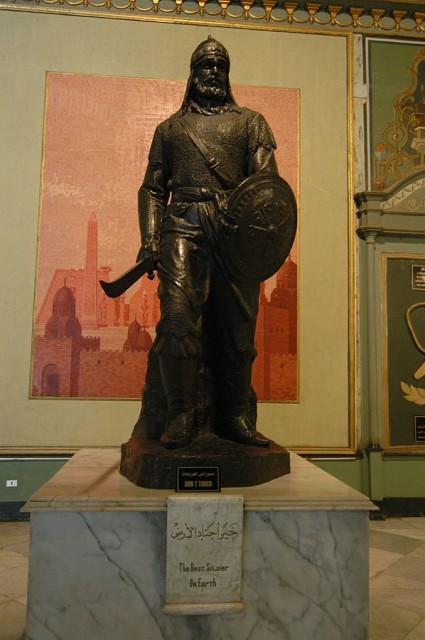
Aside from commentaries on jihad, the other great cultural response to the crusades came in the form of poetry.
The Islamic states had a rich poetic culture with its roots in the pre-Muslim Arab world. The tone and structure of laments for vanished desert campsites were readily adapted to mourn the loss of towns and cities to the crusades. Traditional values of manliness, courage and generosity fitted well into depictions of a heroic struggle against the heathens from the west.
A whole body of poetry emerged, using different existing forms and genres, to celebrate the fight against the invading Christians. It explored and reinforced the identity of the local elite as Muslim warriors, depicting them in ways similar to stories of seventh-century camel raiding. What had once been the poetic form of Arab raiders now spread across the multi-ethnic warrior elite of the jihad. Saladin, the Kurdish military adventurer and most famous leader of the counter-crusading movement, carried with him a volume of poetry by Usamah ibn Munqidh.
Responses to the crusades touched every aspect of Muslim society, from politics to religion to culture. It was an experience that would transform locals just as much as crusaders.
Source:
Jonathan Riley-Smith, ed. (1994), The Oxford Illustrated History of the Crusades.
